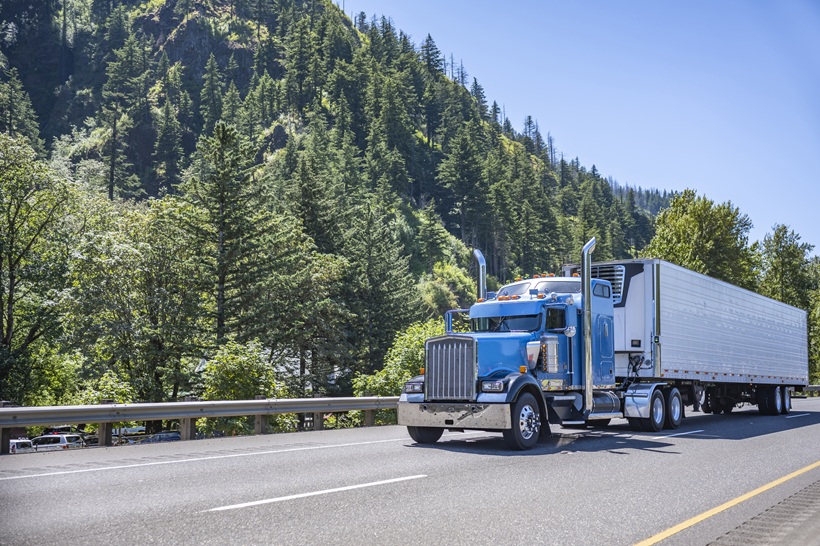
Automation and Silos in Freight: Why Connectivity Matters
AI became a household term in late 2022 when ChatGPT was introduced to the public. Since then, artificial intelligence has exploded across freight tech. From predictive maintenance and telematics to load boards, safety coaching, and document automation, there’s now a solution for nearly every role in the supply chain.
But here’s the catch: just because AI tools exist doesn’t mean they’re automatically a win for your business. In fact, investing in too many disconnected tools can create more problems than they solve. It helps to consider how end users will respond to technology that, for better or worse, could fundamentally change their workflows.
Consider the example of agentic AI and the frustration some carriers are expressing. As one industry observer noted, “Tools are popping up literally every single day that help with deploying virtual agents in voice, text, email, chat and others.” While these tools promise efficiency gains, the reality is that not all of them will gain a foothold in the market, and some may create new problems even as they solve old ones.
What freight companies need to consider about AI changes
At your fleet, brokerage, 3PL, or factoring operation, you may be investing in one or more of these AI tools, or could be seriously looking at using some. According to recent industry analysis, 70% of transportation companies are now adopting AI solutions, up 17% from just the previous year. The same survey found that 84% of industry executives still think transportation lags behind other industries in AI adoption.
With that perception in mind, change management remains a significant issue that supply chain leaders must navigate when employing software that could simplify processes and save money.
But another danger could be lurking that’s just as harmful: silos.
But isn’t AI supposed to eliminate silos?
Absolutely. AI has tremendous potential to break down traditional operational barriers and create seamless workflows. But the paradox is that it can create silos, particularly when you don’t connect data across systems.
Let’s use the hypothetical example of a dual-authority broker and carrier. Too often, the broker side and the carrier side function as completely different entities and don’t share data with each other. When this company gets around to implementing an AI platform it hopes will transform one or more parts of its business where inefficiencies lie, the lack of connectivity further deepens the silo.
This company could run the risk of completely wasting its investment in a tool that was supposed to save money and reduce manual work. The data remains fragmented, workflows stay disconnected, and the promised efficiency gains never materialize.
For a specific use case that could cause a silo, think about predictive maintenance, which is becoming more important as equipment and operational costs increase.
This class of AI tool would be most useful to fleet managers, who want to keep costs down and asset utilization up. But if the fleet’s drivers aren’t up to speed with the status of their equipment and the possibility of maintenance that needs to be done outside of pre-trip and post-trip inspections, a silo can arise between drivers and fleet managers, causing a costly hit in driver satisfaction.
The problem extends beyond maintenance. Document processing systems that don’t integrate with transportation management systems or other crucial platforms create information gaps. Optimization tools that can’t communicate with dispatch systems leave planners making decisions with incomplete data. Each isolated AI tool, no matter how sophisticated, becomes another data island.
Breaking free with Workflow AI

Workflow AI takes a fundamentally different approach. Designed with connectivity in mind, the platform is backed by a system that supports brokers, carriers, and factors not as separate entities, but as interconnected parts of a unified freight ecosystem.
One platform, measurable results
Workflow AI delivers significant results for carriers, brokers, and factors alike.
- Carriers: Hill Bros. Transportation reduced invoice lag by 80% and saved over 1,000 hours annually. Their CFO, Breonda Ziegler, noted how automation freed teams for “higher-level thinking.”
- Brokers: Customers achieve 95-98% processing accuracy, compared to 50-60% on other platforms, with one customer jumping up from 25% automation upon implementation.
- Factors: Reduce manual work by up to 97% while gaining fraud protection through advanced algorithms that detect suspicious activities like double brokering and rate confirmation alterations.
The connected advantage
Connected technologies working alongside the platform create seamless handoffs from cab to cash. When carriers use mobile scanning that feeds directly into AI-powered document processing, brokers receive clean data faster. When brokers operate efficient audit workflows, factors can process payments immediately. When factors accelerate carrier payments, the entire supply chain operates with improved financial velocity.
Choose connectivity over isolation
Freight companies must be discerning about AI tools amid the proliferation of options. While the technology promises tremendous benefits, the danger of creating new silos or exacerbating existing silos is real when systems don’t connect data across operations.
Solutions that bring carriers, brokers, and factors into unified workflows deliver the speed-to-cash improvements, accuracy gains, and scalability that the industry desperately needs.
In an industry where margins matter and cash flow is king, the companies that choose connected automation will operate with superior working capital, improved relationships, and the financial velocity their businesses deserve.
Ready to break free from silos and accelerate your freight operations? Discover how Workflow AI can transform your business with connectivity-first automation designed specifically for carriers, brokers, and factors.



